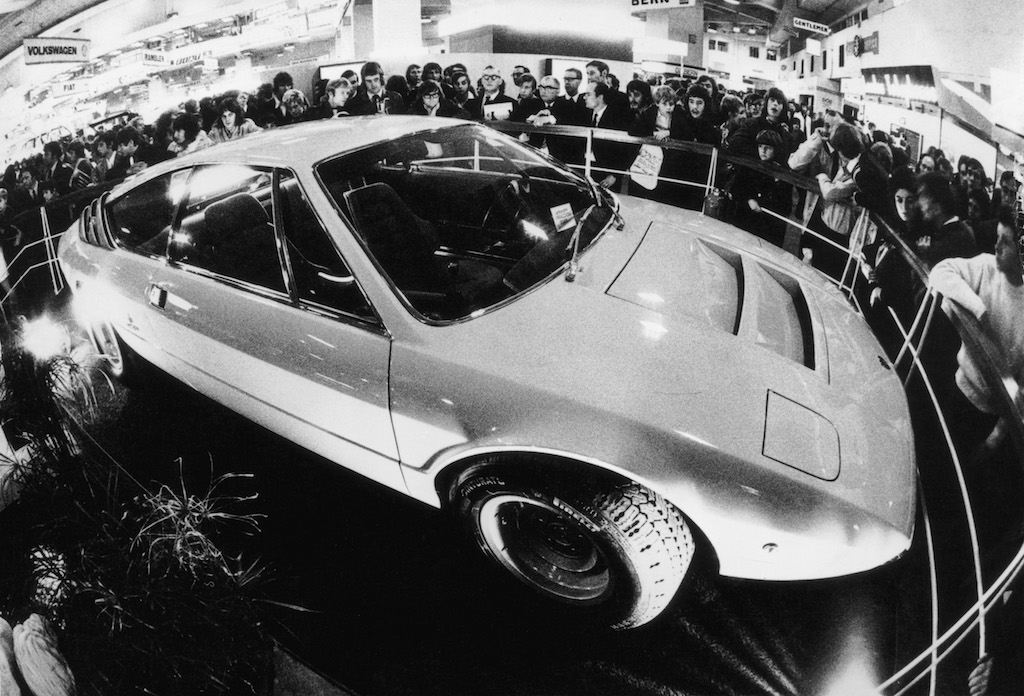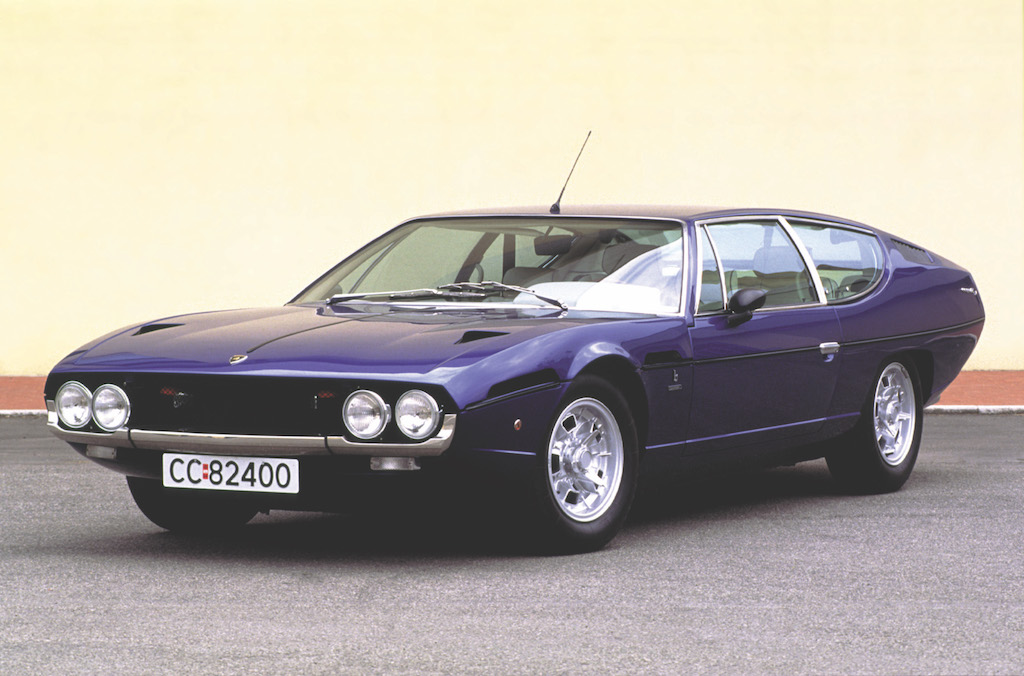 Hulton Archive/Getty Images
Hulton Archive/Getty Images
The 8 Weirdest Lamborghinis of All Time
Automotive history may be rife with tales of revenge and one-upmanship, but no one can top the story of Ferruccio Lamborghini, founder of one of the most outrageous performance car companies in the world, who would’ve turned 100 this week. In 1948, he founded Lamborghini Tractori SpA, and by the mid-’50s, Lamborghini had risen from humble roots to become a wealthy industrialist, expanding into air conditioners and oil heaters — and building an impressive car collection for himself.
By the end of the decade, he had fallen for Ferrari’s beautiful 250GT, buying several. But their lack of durability and comfort frustrated him, and routine mechanical issues soon became unacceptable. He attempted to callEnzo Ferrari to set up a face-to-face meeting to discuss the car’s problems; after all, they were both successful Southern Italian industrialists, it would be a meeting of equals. Instead, Ferrari refused to speak with him and, according to legend, told aides that he didn’t need advice from a tractor builder.

Lamborghini was incensed, and immediately shifted his focus to building the greatest grand touring cars in the world. They would be beautiful, fast, and comfortable, and most importantly, beat Ferrari at its own game. At the 1963 Turin Motor Show, the company debuted its 350 GTV prototype, and would enter production at the 350 GT the next year. In 1966, it would debut the Miura (generally acknowledged as the world’s first supercar), and the rest, as they say, is history.
But the triumph of the Miura almost never happened. Lamborghini himself was highly skeptical of the car, and believed that they would be lucky to find 25 buyers. Lamborghini wanted to build GT cars, and he believed a low-slung, mid-engined show-stopper was the opposite of what his customers wanted. Of course, he was wrong, and the Miura set the template for every great Lamborghini to come since.
Ferruccio Lamborghini left his namesake in 1974 and retired to central Italy, where he focused on winemaking until his death in 1993. And while his company has come to adopt the Miura’s mid-engined wedge-shaped template as gospel, it’s still managed to build a few cars that don’t exactly seem to fit the company’s charging bull badge, and would’ve made the founder happy. In honor of Ferruccio Lamborghini’s centennial, here are eight of the weirdest production Lamborghinis of all-time.
1. 1964-’66 350GT

Source: Lamborghini
It may be the first production Lamborghini, but its quirky design and big V12 over the front wheels make it more of an outlier compared to the rest of the Lamborghini lineage. The 350GT was designed by Giotto Bizzarrini, who left Ferrari to briefly work for Lamborghini before leaving to found his own car company. As a result, the car looks like it could’ve come from any small period Italian automaker, like Iso, De Tomaso, or Ghia. Still the company sold 120 350GTs and nearly 250 of the updaded 400GTs, enough to keep the lights on during its first years.
2. 1968-’69 Islero

Source: Lamborghini
With the 400GT beginning to show its age, Lamborghini decided to rebody it, widen its track, and rename it the Islero. But the company was hindered with supply problems, and as a result, the Islero suffered from quality control issues. An updated Islero S was launched in 1969, but it was too little, too late. Despite Ferruccio and his brother Edmondo both daily driving Isleros, production ended after just 225 cars were built.
3. 1968-’78 Espada

Source: Lamborghini
Launched two years after the Miura, the big Espada was much closer to Lamborghini’s ideal car than his mid-engined masterpiece. With an avant-garde design by Bertone, the Espada shared the Miura’s 3.9-liter V12, but it resided up front under its massive hood. The Espada had four-wheel disc brakes, a fully-independent suspension, could reach speeds over 150 miles per hour, and could comfortably seat four adults, delivering a completely unique driving experience. From a financial standpoint, it proved Ferruccio Lamborghini right too: The company sold nearly twice as many Espadas during its 10-year production run than Miuras.
4. 1970-’76 Jarama
I preferred the Jarama to all the others, because it is the perfect compromise between the Miura and the Espada. The Miura is a sports car for the young at heart who want to go like hell and love to be seen. Myself, I considered the Miura too extroverted after a while. In turn, the Espada was my Rolls-Royce: still quite fast, but also large and comfortable. The Jarama is the perfect car if you just want to have one car.
Ferruccio’s favorite remained in production even after he left the company, with 328 built. Oddly enough, a nearly identical car, the Chevy-powered Iso Lele was produced at roughly the same time (’69-’74); both cars were penned by Bertone designer Mercello Gandini and neither wanted to cede the design to the other.
5. 1973-’79 Urraco
Unlike the earlier cars on this list, the Urraco isn’t powered by a V12. With a mid-engined V8, it was meant to be a “budget Lamborghini,” competing with the likes of the Ferrari 308 Dino and Maserati Merak. The smaller 2+2 was a relative success for the company, with 791 cars built, but was largely overshadowed by its bigger brother, the Countach.
6. 1976-’79 Silhouette
With just 56 cars built, the Silhouette is one of the rarest production Lamborghinis ever built. Largely based on the Urraco, the mid-engined two-seater featured a targa top, and could top out at over 160 miles per hour. Despite being such a rare Lambo, you can’t exactly say the Silhouette is well loved; it’s estimated that around 30 survive today.
7. 1981-’88 Jalpa
Lamborghini tried its luck at an “affordable” V8-powered car a third and final time with the Jalpa. Largely based on the Silhouette, the car was powered by a 3.5-liter mid-mounted V8, and marketed as the more comfortable, easy to live with Lambo compared to the aging Countach. The company found 410 buyers during one of its leaner financial times, and production ended when the company was bought by Chrysler in 1988.
8. LM002
Affectionately known as the “Rambo Lambo,” the LM002 was born out of a call put out by the U.S. military to build a successor to the Jeep in the mid-’70s (which led to the development of the HMMWV, or Hummer). Lamborghini’s offering, the Cheetah, proved to be a disappointment, but the company revived the concept nearly a decade later by stuffing the Countach’s 5.2-liter V12 under the hood (though a 7.2-liter was also available), and offering it to the public. Many of the 328 LM002s found their way to the Middle East, but they’re starting to catch on in the collector market.










You need to be a member of The Vintage Racing League to add comments!
Join The Vintage Racing League